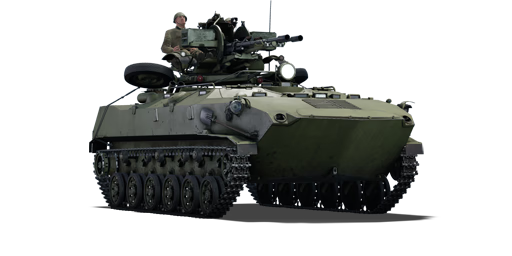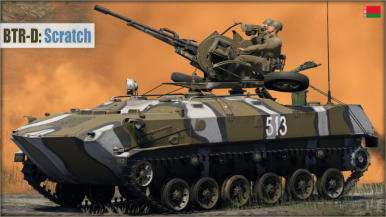



The BTR-ZD was a Soviet anti-aircraft vehicle designed with the intent of providing airborne troops with a mobile vehicle with the ability to transport MANPADS. It was developed in the late 1970s and entered service in 1984. As it was intended, it was originally only capable of carrying Strela and Igla MANPADS, but later on the airborne troops came up with the idea of attaching a ZU-23 twin-barrel autocannon on the modified BTR-D chassis. A little while later, the idea was approved by the manufacturers, and the 23mm autocannon began to be pre-installed on factory-built BTR-ZDs. These variants also had armored plating around the gun crew to protect them from shrapnel and rifle-caliber fire. Following the dissolution of the Soviet Union, the BTR-ZD continued to be used by the Russian Airborne Forces (VDV).
The BTR-ZD was introduced in Update "Danger Zone". Based on the BTR-D chassis derived from VDV's BMD-1, the BTR-ZD offers devastating twin 23 mm autocannons with good accuracy and rate of fire, as well as being mobile; while having the bare minimal survivability for the crew. It is best to wait until enemies get close before engaging them, as the BTR-ZD's autocannons are most effective at short range.
| Belt | Belt filling | Armor penetration (mm) at a distance: | |||||
|---|---|---|---|---|---|---|---|
| 10 m | 100 m | 500 m | 1000 m | 1500 m | 2000 m | ||
| API-T/HEF-I | 51 | 48 | 36 | 26 | 18 | 13 | |
| HEF-I/HEFI-T/HEF-I/API-T | 51 | 48 | 36 | 26 | 18 | 13 | |
| API-T/API-T/API-T/HEFI-T | 51 | 48 | 36 | 26 | 18 | 13 | |
| Belt | Belt filling | Armor penetration (mm) at a distance: | |||||
|---|---|---|---|---|---|---|---|
| 10 m | 100 m | 500 m | 1000 m | 1500 m | 2000 m | ||
| AP-I/API-T | 13 | 12 | 7 | 3 | 2 | 0 | |












Mobility | |
|---|---|
Protection | |
|---|---|
Firepower | |
|---|---|
